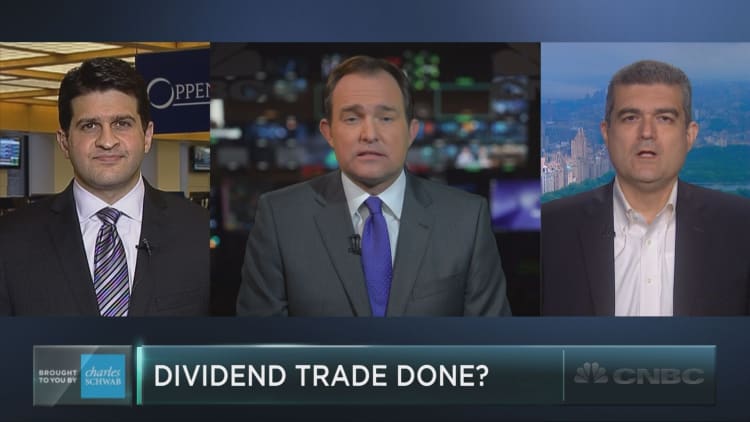
Treasury yields jumped to the highest levels since January, a signal that markets believe Donald Trump's policies could spark a rise in inflation, more growth and ultimately an era of higher interest rates.
Trump's victory speech in the early hours of Wednesday included a pledge to spend on rebuilding America's infrastructure — a plan that could stir economic growth, generate inflation and mean an awful lot of new debt. At the same time, Trump hopes to offer tax cuts to businesses and individuals early on in his presidential term.
The 10-year note was yielding 2.07 percent, the highest level since Jan. 14, and the 30-year was at 2.86, also a January high in afternoon trading. It was the biggest one day jump in the 10-year yield since Aug. 11, 2011.
co-founder, Bespoke
"Increased fiscal stimulus which could spur growth and inflation, and funded by tax cuts. That means a huge amount of money and supply. That's what's happening in rates, in a sentence," said John Briggs, head of strategy at RBS.
That might give a boost to growth, so expectations for a Fed rate hike in December returned to 80 percent odds Wednesday, after dropping during the overnight session amid market turbulence. The short end of the curve is most sensitive to the Fed, and the two-year yield also rose, though not as much. The yield was at 0.89 percent, up from near 0.70 percent overnight.
Briggs said the market read Trump's acceptance speech as more conciliatory, but the idea that he could still spur trade wars with Mexico and others also gives some weight to the argument for more inflation.
"Financial markets are mostly reacting to the economic plans, but there is still an added boost, that if you increase tariffs, mechanically you will have higher imported good prices, which is inflationary," he said.
The remarkable surge in yields also came as the Treasury auctioned $23 billion in 10-year notes in a choppy auction Wednesday afternoon, with foreign bidders taking less of the offer and primary dealers taking more.
The 10-year auction stopped at 2.02 percent, making it the widest gap between the auction rate and what Wall Street expected since 2012. The 10-year remained under pressure and yields rose to 2.05 percent after the auction.
"This is a very significant move," said Ian Lyngen, head of U.S. rate strategy at BMO. Lyngen said the fact yields moved to a high mark at the auction and the absence of some overseas buyers may signal a new climate for government auctions.
"The typical indirect buyer was more cautious at today's auction in light of the recent backup in yield and the near term uncertainty associated with the new president," said Lyngen. Lyngen said he had a target of 2.15 percent for the 10-year.
Briggs said he sees the 10-year at 2.25 percent before the end of the year, and that buyers may also be wary in the current environment as they await more clarity on Trump's plans.
BlackRock's Rick Rieder said he will be watching to see how the spending will be financed for the proposed fiscal infrastructure package. "This may well aid in accelerating the pickup in inflation levels that already appeared underway, and it likely also results in steepening in the yield curve over time. Of course there are several ways in which this infrastructure could be financed, and if done properly it could benefit from the extraordinary financing conditions we have today," he wrote.


